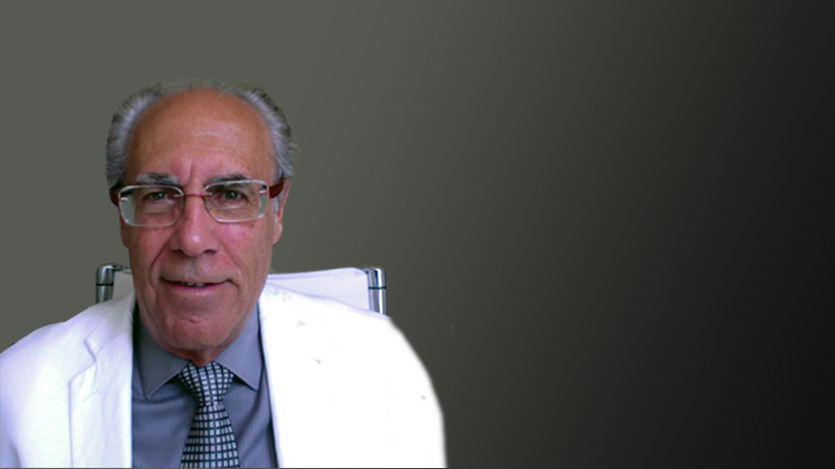Saban Scientific Writing (https://sabanscientificwriting.wordpress.com/) is an Independent Information Service for researchers that provides consulting on grant and manuscript writing, scientific methodology, translations (English, Portuguese, and Spanish), editing, formatting, and publishing.
Dr. Ricardo Saban is an independent consultant with 30 years of experience in grant and manuscript writing. He is also an internationally recognized expert that uses cDNA arrays, data visualization, Significance of Analysis of Microarrays (SAM), machine learning and suppression subtractive hybridization (SSH) to determine tissue-specific genes controlling blood and lymphatic vessels in neurogenic inflammation and cancer. He was originally trained at University of S. Paulo, Brazil (DVM, PhD) with postdoctoral work as a pharmacologist/ physiologist at the University of Wisconsin-Madison in the United States. He has published more than 90 articles in scientific journals, and has participated in numerous grant review panels for the NIH/NIDDK and the NCI. Dr. Saban has also done numerous reviews for scientific journals, and was a Section Editor for BMC Physiological Genomic and a member of the Editorial Board of the American Journal of Physiology – Renal. Presently, he is an Emeritus Professor of Physiology, College of Medicine, (OUHSC) and Honorary Fellow in the Department of Neuroscience, School of Medicine (UW-Madison). His areas of teaching expertise are Human Physiology & Science Methodology.
1) Your goal is to train medical students how to ask the right questions. Can you explain how your work as a medical professional has inspired this particular goal?
Learning how to ask questions that could be tested with several experiments to establish a cause-effect relationship has been the main source of inspiration to my students. We classify these experiments as hypothesis-driven. Normally, this type of experiment involves at least 2 groups: one experimental and one control. Recently, we have changed the paradigm by introducing genomic and proteomic research in my laboratory, and we have developed experiments that will test 20,000-25,000 coding genes to find out those that might be involved in biological responses like inflammation or cancer. This new paradigm has been named hypothesis-generating experiments. The selected lead molecules are then taken as putative candidates to play a plausible role in the pathology and additional experiments are designed to test in a hypothesis-driven manner if they really participate on the phenomena being studied.
Several considerations must be taken when designing research. First, the researchers have to fund their work, which can take years. Then the work has to be vetted and approved by an Institutional Review Board (I.R.B.s), which safeguards subjects from potential harm. I.R.B.s are especially vigilant when studies involve children, a vulnerable group. Even if the research is of minimal risk, this process can take months. Schools must also give permission to do the work. Often, protocols and rules require getting permission from parents for their children to be part of studies. Therefore, it is fundamental that methodological decisions have to be carefully delineated to properly address the central hypothesis.
One of the most difficult steps facing students beginning research for the first time is the elaboration of a testable hypothesis. A hypothesis will help them to explain the reason for some biological observation. Students realize early that a scientific question is a part of the scientific method (which includes making an observation, asking the question, forming a hypothesis, testing it, and accepting/rejecting/modifying the hypothesis). For this purpose, they must learn how to elaborate pertinent questions and avoid confounders that might lead to wrong conclusions. More information about wrong hypotheses and simple correlations can be found on http://callingbullshit.org/ Based upon knowledge from the literature or a few preliminary experiments, medical and graduate students struggle to formulate questions that will ultimately evolve into a central hypothesis of their research. Most students propose questions that will lead to a simple correlation between two variables, and end up with half-baked hypothesis. Asking the wrong question increases the pitfalls of flawed experiments, false interpretation of the results, and wrong conclusions. Students must be able to critically review the literature to filter out misleading information while emphasizing only the solid and corroborating evidence. Students must learn to spot bad science and to question whether the research being presented has sound results. In this context, the students need to be trained on how to spot those papers with exaggerated headlines and conclusions unsupported by the findings.
2) Your recent focus has been on the use of research misinformation, disinformation, and fake news. What can you tell us about that?
Investigators, reviewers and editors tend to exclusively publish studies with positive outcomes. This phenomenon is known as publication bias. In other words, positive or statistically significant results are more likely to be published than negative ones. On one hand, reporting negative outcomes is important because they often close a field—meaning spending additional time and money trying to replicate results reported to have no association or cause and effect is unnecessary. On the other hand, journals want results of consequence, i.e. those that break old paradigms or theories. Reports that simply support an established idea are often accepted for publication, but they are less likely to reach the news and therefore, tend to be published in less impactful journals. Indeed, the vast majority of articles accepted for publication either confirm or perpetuate pre-existing theories, and only a few break the mold.
With the advent of social media, misinformation is resulting in epidemics. There is no doubt that we are facing an information overload. The misinformation and disinformation polluting social media contributes to the difficulties of spotting bad research.
The false claim that vaccines may predispose children to autism is a good example of how misinformation can cause serious damage. Although scientific advances and careful regulation has made vaccination a resounding success, one paper changed the willingness of parents to immunize their children. In 1998, Dr. Andrew Wakefield published an article that he eventually retracted after losing his license to practice medicine in the United Kingdom. The paper was a case series that appeared in the Lancet, suggesting that the measles, mumps, and rubella (MMR) vaccine may predispose children to developmental disorders. The paper received wide publicity, and MMR vaccination rates began to drop because parents were concerned about the risk of autism after vaccination. After causing this damage, the paper was declared incorrect, unethical (among his alleged acts of misconduct were conducting those studies without ethical approval of the hospital at which he practiced, and paying children at his son’s birthday party for blood samples), and the investigator failed to disclose that his financial interests were implicated (Wakefield was funded by lawyers who represented parents in lawsuits against vaccine-producing companies). The Lancet completely retracted the Wakefield paper in February 2010, admitting that several elements in the paper were incorrect, but the damage was done. Misinformation about vaccine science persists on social media, fueled by celebrity “anti-vaxxers.” As a result, an increasing number of parents are choosing not to vaccinate their children, and the incidence of these diseases is starting to increase after being almost completely eradicated.
3) You stress that your students must know the difference between sound research and “quackery,” but the average person confronts conflicting research everyday through the mainstream and social media. What advice would you give to a lay person in evaluating information and steering clear of “quackery”?
Another pitfall of reviewing the available information is the presence of health and scientific fraud—the latter, most often presented as scientific information published in journals, may be difficult to spot. However, the overemphasized new discovery or the overblown importance of a groundbreaking finding unsupported by corroborating evidence and published by independent investigators offer a clue that the conclusions should be taken with reservation. There are different reasons for retraction: plagiarism, fraud, inconsistence of results, errors of methodology, etc. Recently, sites like retraction watch (https://retractionwatch.com/) have listed manuscripts that for one reason or another have been retracted. Unfortunately, this process is slow and by the time one manuscript is retracted, several others have already spread the misinformation by quoting the original published manuscript. Additionally, the promotion of fraudulent or ignorant medical practices by professionals that do not have the skill, knowledge, or credentials is referred to as “Quackery.” How to spot quackery? An obvious clue you might be dealing with quackery, at least when it comes to new treatments, is the properties of the substance are not described based on evidence or clinical trials. Most often, support is based on testimonials and anecdotes that are the sole or primary support for the claims. The claims are vague, and the miraculous substance or treatment is claimed to improve energy levels, boost the immune system, improve quality of life and longevity, or induce weight loss. To combat this problem,websites have been developed to list and report observed quackery. (http://quackwatch.org/).
Bold


